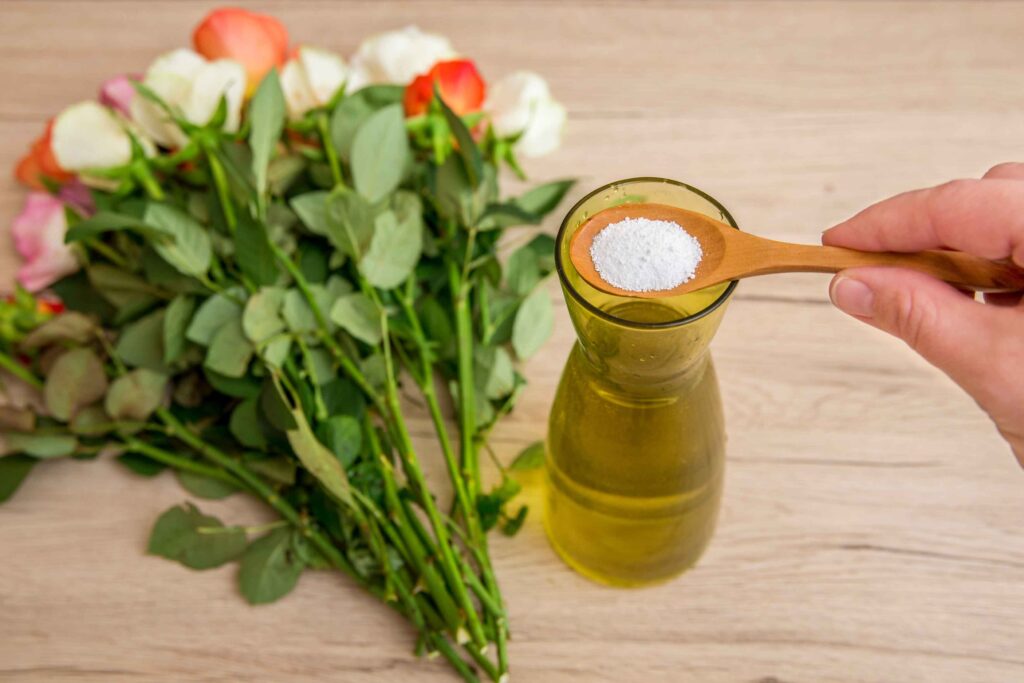Receiving a beautiful flower arrangement from a local florist is always a delightful experience. It brightens up your day and adds a touch of elegance to your home or office. However, it can be disappointing when your arrangement starts to wilt and fade after just a few days. The good news is that you can follow some simple tips to extend the life of your flower arrangement and enjoy its beauty for longer. In this article, we’ll share five tips for extending the life of your flower arrangement that you just got from a local florist.
1. Keep Your Flowers Cool
Flowers prefer cooler temperatures, so keeping your arrangement in a cool spot away from direct sunlight and heat sources is essential. This can help slow the wilting process and keep your flowers looking fresh for longer. Keep your flowers in a room between 65 and 72 degrees Fahrenheit if possible.
In addition to keeping your flowers in a cool spot, you can also avoid placing them near any fruits or vegetables that release ethylene gas, which can cause flowers to wilt and age prematurely. It’s also a good idea to avoid placing your flower arrangement in a drafty area or near any air conditioning vents or fans, which can cause the flowers to dry out faster. By taking these additional precautions, you can help ensure that your flower arrangement stays fresh and beautiful for as long as possible.
2. Give Your Flowers a Fresh Cut
Before placing your flowers in water, giving the stems a fresh cut is essential. Cutting your flowers helps to create a larger surface area for the flowers to absorb water and nutrients, which can help them stay hydrated and healthy for longer. It’s important to note that when cutting your flowers, you should use a sharp pair of scissors or pruning shears. A dull blade can crush the stems, making it difficult for the flowers to absorb water and nutrients.
Additionally, it’s best to cut at a 45-degree angle rather than a straight cut- at least 1/4″ to 1/2″. This helps to create a larger surface area for the flowers to absorb water, which can help them stay fresh for longer. Finally, when you’re trimming the stems, be sure to remove any leaves or foliage that will be below the water line. This helps to prevent bacteria from growing in the water, which can cause the flowers to wilt more quickly.
3. Change the Water Regularly
To keep your flower arrangement fresh, you must change the water regularly. Bacteria can build up in the water, clogging the stems and making it difficult for the flowers to absorb the nutrients they need to stay healthy. Ideally, you should change the water every two to three days or whenever it starts to look cloudy or murky. Before refilling the vase, rinse it out with warm water and a drop of dish soap to help remove any bacteria or residue.
In addition to changing the water regularly, it’s a good idea to trim the stems of your flowers each time you change the water. This helps create a fresh surface area for the flowers to absorb water and nutrients, which can help keep them healthy and vibrant. You can also add a small amount of flower food to the water to help provide the flowers with the nutrients they need to stay fresh for longer. When refilling the vase, use lukewarm water instead of cold water to help the flowers absorb the water more efficiently. Finally, be sure to rinse the vase with warm water and a drop of dish soap to help remove any bacteria or residue before refilling it with fresh water.
If you’re using floral foam in your arrangement, make sure also to change the water in the foam every two to three days. You can do this by carefully pouring water onto the foam until it’s fully saturated.
4. Use Flower Food

Most florists provide a packet of flower food with their arrangements, which can help extend your flowers’ life by providing the nutrients and hydration they need to stay healthy. Simply dissolve the packet in the water according to the instructions, change the water, and add more flower food each time you change the water.
It’s important to note that not all flower food packets are the same. Some contain sugar, acidifiers, and bleach, while others have only a few basic nutrients. Be sure to read the instructions on the packet carefully and use only the recommended amount to avoid overfeeding your flowers.
If you don’t have flower food packets available, you can make your own homemade flower food using common household items. One recipe is to mix one teaspoon of sugar, one teaspoon of bleach, and two teaspoons of lemon juice in one quart of lukewarm water. The sugar provides energy for the flowers, the bleach helps prevent bacterial growth, and the lemon juice acts as an acidifier to help the flowers absorb nutrients. Another recipe is 2 Tbsp of sugar with 2 Tbsp of white vinegar. The sugar will help nourish the flowers, and the vinegar will help inhibit bacteria and keep your flowers fresher longer. If you don’t have these pantry staples, lemon soda mixed with warm water will do the same thing.
Always use a clean vase and fresh water when adding flower food or making your homemade mixture.
5. Remove Any Dead or Wilting Flowers
Lastly, removing dead or wilting flowers from your arrangement is essential as soon as possible. Doing this will help prevent them from contaminating the rest of the flowers. It can help extend the life of your arrangement overall. Use your pruning shears to remove dead or wilting flowers, and rearrange the remaining flowers to fill any gaps.
In addition to removing dead or wilting flowers, it’s also important to check for any leaves or petals that may have fallen into the water. These can decay quickly and contribute to bacterial growth, affecting the entire arrangement.
Suppose you notice that a particular flower is wilting or drooping. In that case, you can try reviving it by cutting off the bottom of the stem and placing it in warm water. You can also submerge the entire flower, including the stem and leaves, in warm water for about 30 minutes. This can help rehydrate the flower and bring it back to life.
When rearranging your flowers, consider the shape and height of each stem. You can create a balanced and visually appealing arrangement by varying the height and positioning of each flower. You can also add foliage or greenery to fill any gaps and add texture to the arrangement.
In Conclusion





